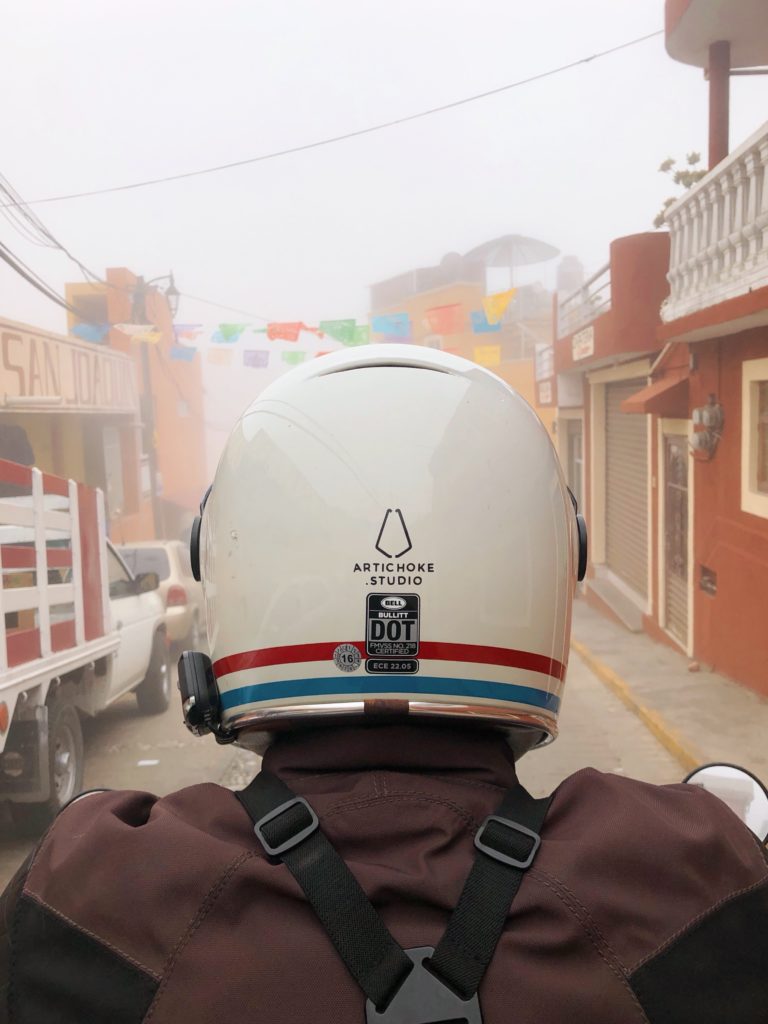When choosing a helmet, some brief research will show that certain helmets are “Rated” to be DOT or Snell compliant. It’s not actually a rating system; it’s a “self-certification” process wherein helmets are tested and deemed to meet certain NHTSA requirements. There are at least 5 different certifications I know about, but only 2 are specific to the United States; feel free to research the others you may see online if you live in the UK, Europe, or elsewhere. Since most of my readers are in the US, we’re focusing on DOT vs Snell. In short, if your helmet does not have a sticker or stamp on it showing that it meets DOT and/or Snell standards, do not buy it!!!
What is the difference between DOT vs Snell?
It is basically the testing and if you want to know more, just surf around the NHTSA website and see all the particulars. Snell helmet standard includes dynamic retention and roll-off tests. Here, they use falling weights to test whether or not a helmet will pop off a rider’s head when met with downward force. Snell also does a chin bar test for full-face helmets by dropping 11 pounds of weight onto the chin bar from certain heights and measuring anything that happens to the chin bar. Snell also tests face shields by shooting at them with lead pellets from an air rifle, and if the pellets make it through the shied or cause any kind of deformation, the helmet fails. DOT and Snell offer Impact Analysis and use accelerometers to determine how fast the helmet stops moving during the impact test, but their standards differ. The DOT allows up to 400Gs of peak acceleration while the Snell standards only allow up to 275Gs.
In summary, both certifications require that the helmet withstand hits to the helmet, assess absorption, and dissipate the shock experienced by the rider’s skull. Reviewing the reports for the helmet you intend to buy shows that these certifications require strict adherence to their testing parameters. Accelerometers and a litany of other testing tools are used to assure that the tested helmet can withstand shocks at different temperatures, and speeds. When you delve deeper, it is amazing to see how in-depth the testing can be. That is great for you as a motorcycle rider since testing assures that your certified helmet will do its job and save your life if you crash at the track or out on the road.
Can Open-Face Helmets be Certified?
The short answer is yes. I always advocate for full-face helmets for various reasons besides chin and mouth protection. When I’m hunched over a superbike, I like to know my teeth and chin will survive if I have a tank slapper at the track or if a car decides to stop short in front of me. I respect riders that choose open-face helmets since you do get to enjoy the ride a bit more, but nothing protects better than a full-face helmet. In my opinion, the big downside with open-face helmets is wind noise, and when I opt for an open-face helmet, I notice wind noise is enhanced when the wind comes whistling through the chin strap. I feel I experience less “wind noise” from a full-face helmet, and it is even quieter if I add earplugs for a long ride. If you opt for an open face, consider a nice pair of custom-fit ear plugs. As a long-time rider, I’m noticing my hearing has taken a beating, so I’m trying to keep what hearing ability I still have, and you should too.
How to Tell if a Helmet is Certified
The basic rule: just look for that DOT/Snell Sticker. If you’re concerned the sticker might be fake, here are some basic things you can look for to ensure the certification is legit:

- Unsafe helmets will be less than 1 inch thick and usually lack a stiff foam inner liner.
- Helmets meeting the DOT safety standard have sturdy chin straps with solid rivets. Unsafe helmets may have plastic buckles that can easily break in the event of a crash.
- Depending on the design, unsafe helmets may weigh a pound or less. Helmets meeting the federal standard generally weigh about 3 pounds.
- Be suspicious of helmets with advertisements such as “thinnest helmet available” and “lightest weight helmet.”
- The DOT safety standard does not allow anything to extend further than two-tenths of an inch from the surface of a helmet. For example, while visor fasteners are allowed, a rigid spike or other such decorations indicate an unsafe helmet.
- A design such as the German Army or skullcap style may be a clue to an unsafe helmet. Unsafe helmets are noticeably smaller in diameter and thinner than ones meeting the DOT standard. However, some German Army-style helmets may meet federal requirements.
How can I check if the helmet I want is DOT or SNELL certified?
A wonderful online database of compliant gear can be found on the NHTSA website. If you are shopping for a helmet today, feel free to stop reading this blog and research your intended helmet under equipment and FMVSS. Submit a search, and then you can choose your manufacturer. Once in, you will see a list of helmets that have been tested, along with a PDF report and pictures. You can see which models passed and failed and for what reasons.
If you are shopping for a helmet, check out my recent post about how to choose the right motorcycle helmet. Call, Email, or message me on Facebook if you want a more in-depth conversation about DOT vs SNELL helmets. Be safe and see you out on the road!

